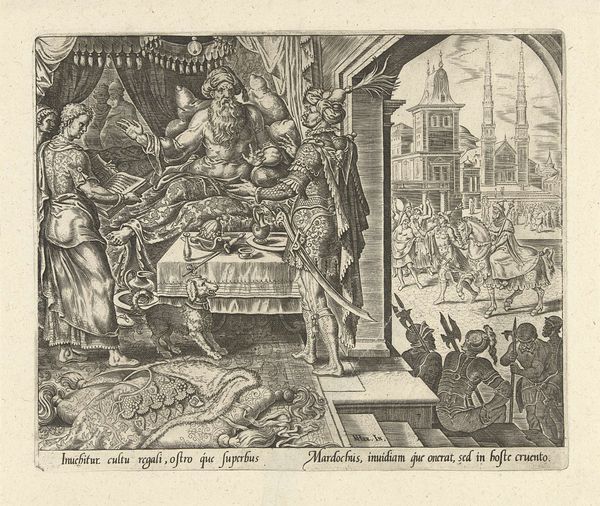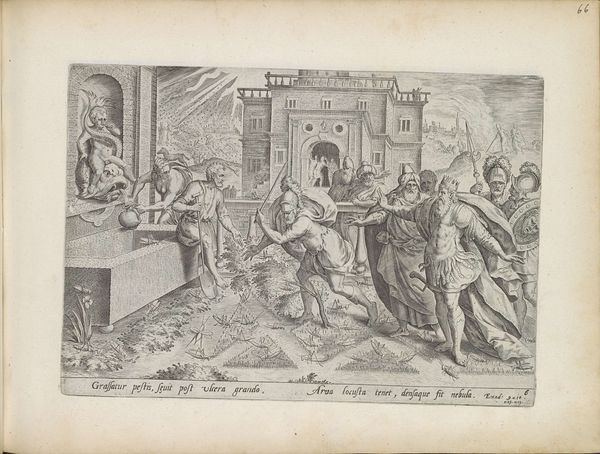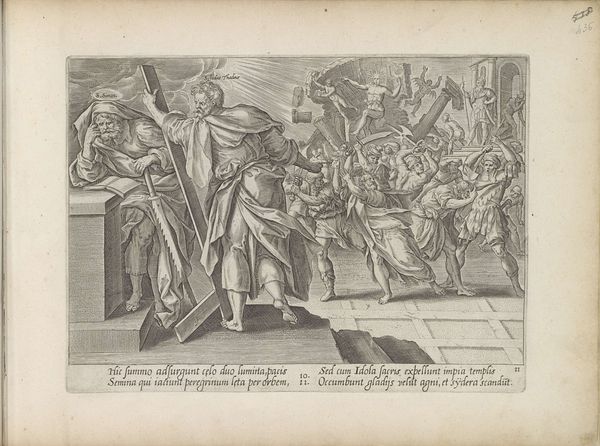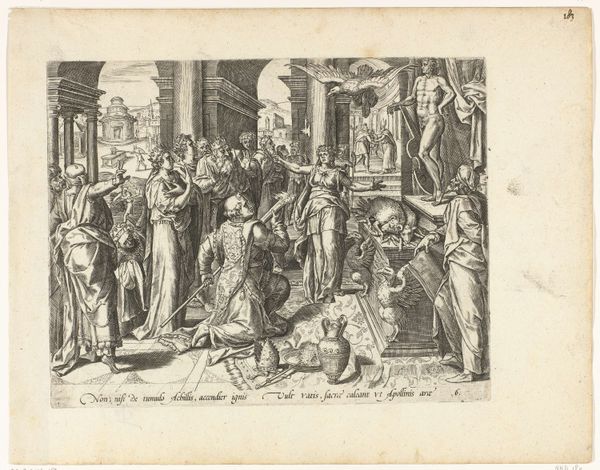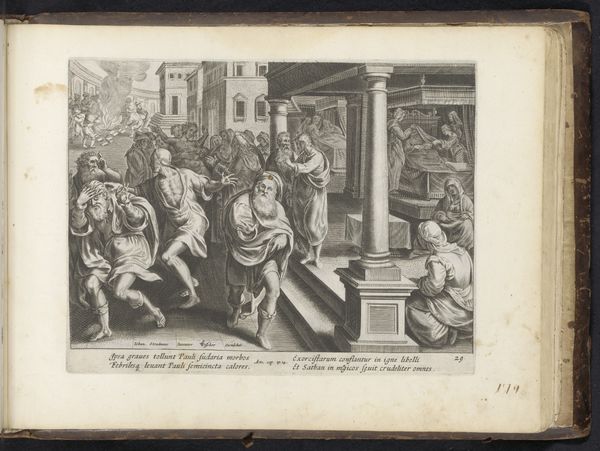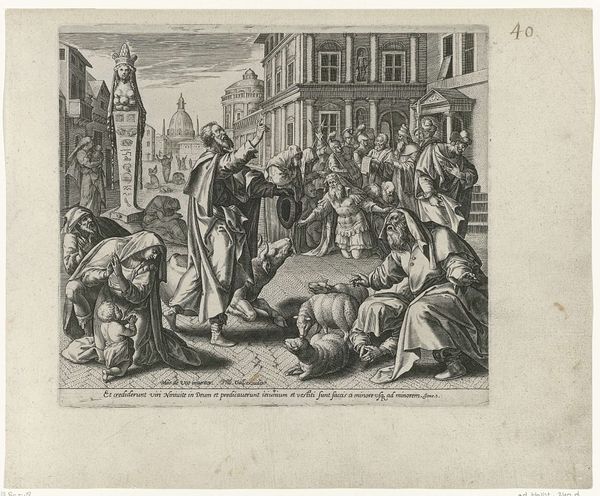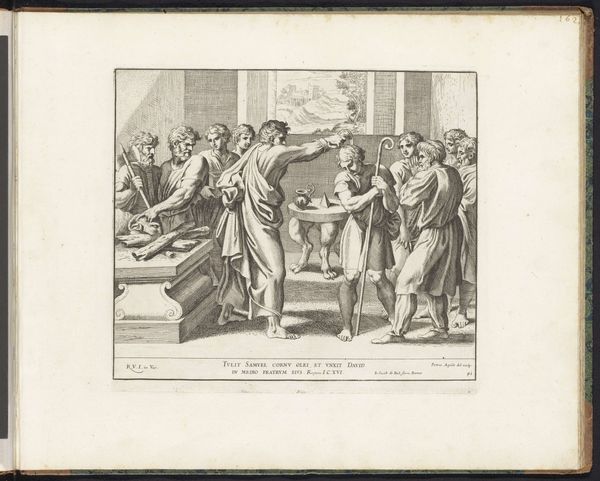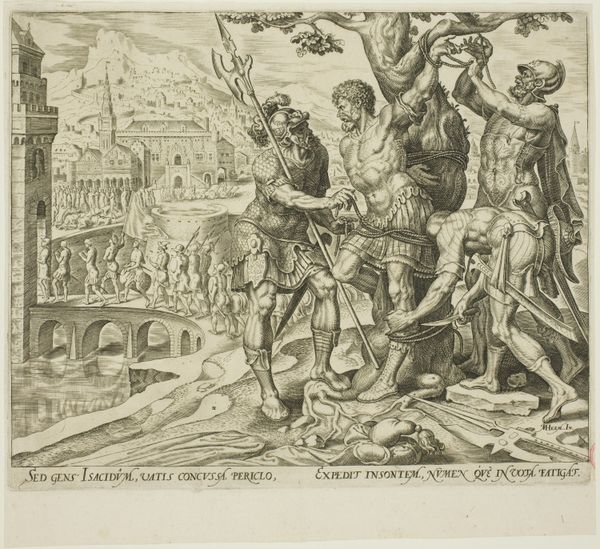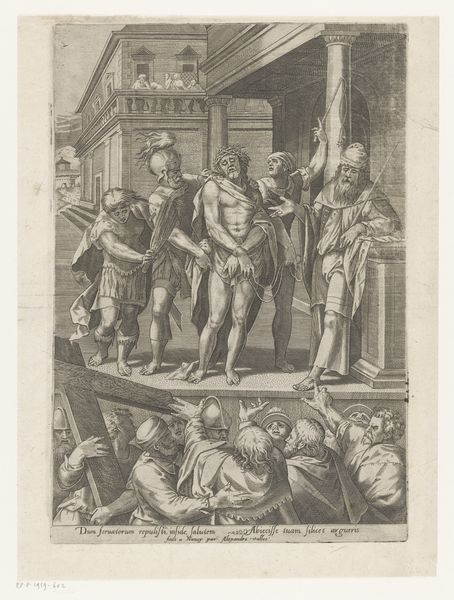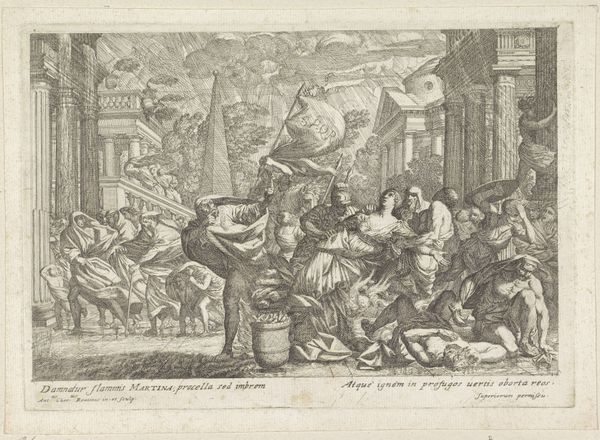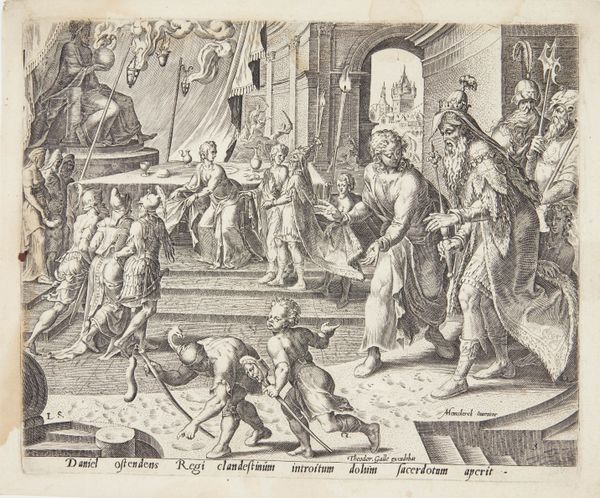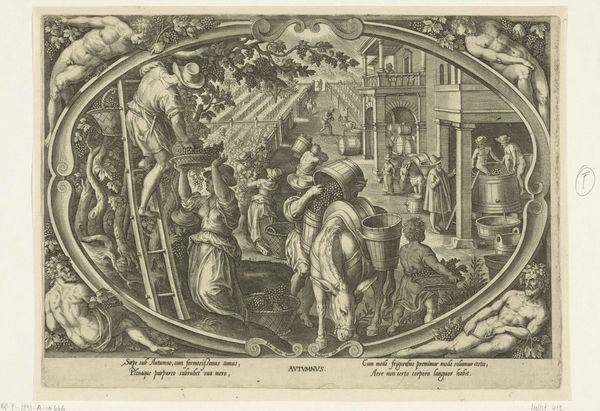
print, engraving
# print
#
figuration
#
history-painting
#
northern-renaissance
#
engraving
Dimensions: height 200 mm, width 257 mm
Copyright: Rijks Museum: Open Domain
Curator: We are looking at "Paulus drijft de boze geesten uit in Efese", an engraving made by Philips Galle in 1582, now held in the Rijksmuseum collection. Editor: It feels… frantic. There's a clear division in the composition. On the left, figures flail wildly, seemingly tormented, and on the right, more controlled interactions, almost theatrical. What’s your read on that visual contrast? Curator: That division highlights a key historical tension—the shift from pagan belief to Christian doctrine in Ephesus. The possessed figures on the left are reacting to Paul’s power to exorcise demons. Note the bonfire in the background of spell books. Editor: That detail about burning the books is so telling! We see the deliberate destruction of physical objects connected to existing practices, reflecting an attempt to erase a material culture linked to beliefs now deemed demonic. The engraving becomes a document of that process. What materials were being burned, and who decided they were demonic? Curator: Galle presents Paul's actions as a public purification, necessary for establishing Christianity. It’s an idealized depiction of that shift in Ephesus, obviously intended to instruct its viewers, framing the moment. We see a narrative constructed for the public in a period when religious identity was a political battleground. Editor: And notice how the material outcome is not only burning spell books. It appears as though in the background, further into the composition is a group in a bed. Who are they, and what materials are they in contact with? How do those people interact with the materials? It's quite striking, juxtaposed to the physical burning, the bed almost symbolizes a healing transformation through human care and material assistance. Curator: Yes, and by depicting that moment so dramatically and embedding it in a print circulated widely, Galle shaped the reception of the events and therefore Christianity's rising influence on political thought. The composition presents order through chaos. Editor: Examining the work, thinking about how material is portrayed being physically burnt in opposition to being a symbol of the rise of new belief through its transformation, adds many rich layers of understanding. Thanks for your perspective! Curator: Likewise, considering the cultural shifts really underscores the power of these historical events to shape belief systems to this day.
Comments
No comments
Be the first to comment and join the conversation on the ultimate creative platform.
